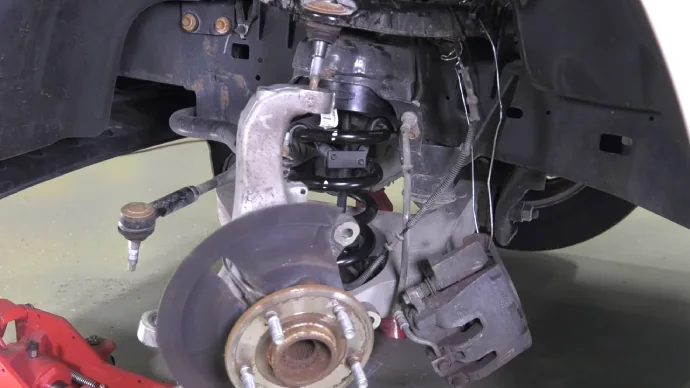Last Updated on April 17, 2023
Do you want to make your vehicle more capable of conquering on and off-road obstacles? Adding a leveling kit on a lift kit to your car can be the answer you are seeking.
Not only does it give you more ground clearance, but it also makes your ride smooth and factory-like. But is it possible to put a leveling kit on top of the lift kit?
While many lift kit manufacturers don’t suggest it, there is a way to make it work. When you remove the wheels, install the leveling kit and lift kit, reinstall the wheels, and tighten & check the alignment with the correct bolts, you can stack one on top of another to make your four-wheeler even more versatile.
This article describes the steps for installing a leveling kit on a lift kit and its benefits and drawbacks. Keep reading to learn more about achieving your vehicle’s perfect lift and leveling combination.
How Can You Put a Leveling Kit on a Lift Kit: Bolting on New Heights
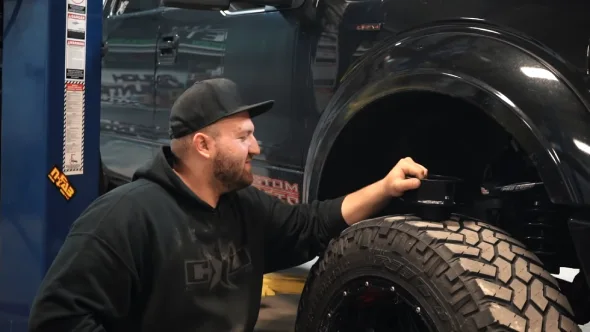
Putting leveling kits on suspension lift kits can be quite a challenge. It requires a certain technical skill and know-how to complete this task professionally. Here is a step-by-step guide for bolting on a new height with a leveling kit and lift kit:
Materials needed:
- Car leveling kit
- Lift kit
- Jack stands
- Hydraulic jack
- Socket wrench set
- Torque wrench
- Wheel chocks
STEP 1. Prepare Your Car
The first step in putting a leveling kit on your car is properly preparing it. This includes ensuring the car is parked on a level area where you can safely and comfortably work on it, such as a driveway or garage.
Then, ensure the vehicle is secure using the parking brake and setting wheel chocks behind each tire. You can start installing the kit once you’ve prepared your car.
STEP 2. Lift Your Car
Once you have prepared your car, you must lift it to access the wheel wells and suspension components. Depending on your setup, you may need an automotive car jack or a ramp system.
During this process all safety precautions are taken such as using wheel chocks before lifting the vehicle, wearing appropriate safety clothing and footwear, and having someone spot the vehicle while it’s being lifted by raising one hand high above their head while giving audible warnings when necessary.
STEP 3. Remove the Wheels
Once your car is lifted up off of the ground, you will be able to access all four wheel wells with ease. Remove each wheel from its respective wheel well by loosening its lug nuts with an appropriate-sized socket wrench.
After enough loosening, pull each wheel off its hub until they are no longer attached. Place each wheel aside carefully so they do not get damaged during the installation of the leveling kit or lift kit later.
STEP 4. Install the Leveling Kit
Now that your wheels have been removed from their hubs, remove your leveling kit from its packaging and begin following along with any included instructions for installation if applicable.
In any case, begin uninstalling any existing suspension components, as they will be replaced with the ones included with the leveling kit, such as sway bar drop brackets or torsion bars if equipped with one in particular models/makes of vehicles (consult manufacturer’s literature for exact part numbers/descriptions).
Before installing any component, ensure all hardware connections have been properly tightened using torque wrenches at specified ratings. Incorrect placement/tensioning settings could cause premature component wear or failure, resulting in dangerous situations while driving down the highway!
STEP 5. Install the Lift Kit
Once you have installed your leveling kit correctly, now would be an ideal time for installing whatever type of lift you want onto your vehicle. Depending upon what type of lift/tooling system has been chosen, it should be fairly straightforward, follow along with any included instructions provided with package contents (if applicable).
Otherwise, just get started by removing old suspension components which aren’t compatible & replacing them with those associated aftermarket systems such as coil-overs or linkages if necessary (again, consult the instruction manual for exact part numbers/descriptions).
When reinstalling these parts back onto vehicle chassis frame members like lower control arms etc., they must always remain tight enough. Hence, there’s no slop whatsoever, but not too tight causing abnormal wear over long periods either–torque wrenches should still see frequent usage here too.
STEP 6. Reinstall the Wheels
When reinstalling the wheels, you must take extra care as improper installation can damage the car and potential injury. Professional auto shops use various tools to install your wheels correctly and safely.
To begin, the existing lug nuts should be removed from the wheel studs using a lug wrench or socket. It is essential to use a torque wrench when reinstalling the lug nuts to ensure that they are sufficiently tight but not overly so.
The torque value for each nut should be taken from the car’s owner’s manual and will likely vary depending on the make and model of the car. Once all the lug nuts have been installed, many mechanics will also use an impact gun with a torque stick to double-check that each bolt is tightened properly.
STEP 7. Lower the Car
After the wheels have been appropriately reinstalled, it’s time to lower your vehicle back onto its tires. The best way to do this is by using a floor jack or hydraulic lift with enough capacity for your vehicle’s weight, raising it slightly before positioning jack stands underneath each end, and safely lowering it back onto its tires using the jack stand.
If you are replacing all four tires at once, it may be necessary for two people to work together for one person to control both jacks at once while another guides them into place. Once lowered ultimately onto its tires, check that all four corners of your car have equal clearance from ground level.
STEP 8. Tighten the Bolts
Once your vehicle has been lowered back onto its tires and leveled all four corners must be securely fastened back together before it can be driven again.
Start by ensuring that any bolts removed during tire replacement are still present and accounted for before beginning assembly on any corner of your car. Missing hardware can cause catastrophic failure when driving!
Using an impact gun and torque stick, you can tighten bolts quickly, efficiently, and accurately. Most cars require specific settings for their hardware, so taking extra time here will pay off later. Having checked all bolts for proper torque, move along one corner at a time until you reach your starting point.
STEP 9. Check the Alignment
Once all hardware has been tightened properly, it is time to check the alignment settings on your vehicle’s suspension system. If you skip this step, you’ll be forced to replace your tires much sooner than you would like due to premature wear from the tread pattern caused by unbalanced suspension components.
Comparison Points Between Leveling and Lift Kits for Jeeps
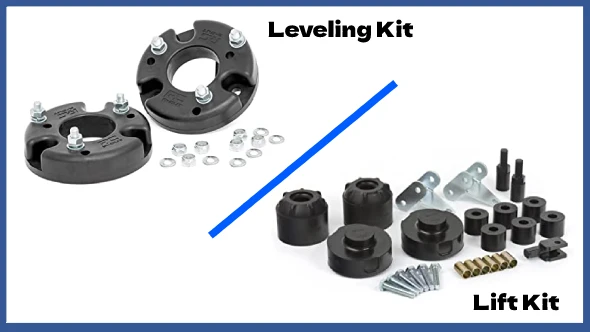
When you want to customize your Jeep, there are two of the most popular modifications: leveling and lift kits. Both of these kits have their advantages and disadvantages. So it is essential to understand their differences and how they will affect your driving experience before you decide which one is right for you.
1. Height Adjustment:
The biggest thing that separates leveling and lift kits for a Jeep wrangler is the amount of height adjustment you can make with each.
Leveling kits generally only provide a slight increase, usually no more than two inches, whereas lift kits can offer a much larger adjustment range, from one to six inches.
You can lift up to even ten inches depending on custom modifications. This means that leveling kits are perfect for those who want a simple change in their truck’s appearance without significantly altering its ride height.
In contrast, lift kits are best suited to off-roaders who need greater ground clearance and suspension adjustments in order to tackle more challenging terrain.
2. Tire Size:
The primary difference between leveling kits and lift kits in regards to tire size is the type of tires that can be used with each kit. Leveling kits are typically designed to fit 33- to 35-inch tires, while lift kits are designed to fit larger wheels between 35- to 40-inch tires.
This is seen as an important distinction because different types of tires have different capabilities, whether it’s daily driving, long distance hauls or extreme off-roading.
Leveling kits are often chosen for their ability to provide a smoother ride over long distances and a lower center of gravity for better balance and stability on the road. However, one downside is that they tend to be incompatible with larger off-road tires since they require such small sizes.
3. Performance & Handling
When considering the performance of leveling kits and lift kits for Jeeps, acceleration and top speed potential should be examined. Overall handling capabilities will vary depending on how high the suspension is set.
A lift kit can provide better performance for these heavier uses due to its greater range of lift height adjustment. It allows them access into crevices and over obstacles that would be impossible with a standard suspension setup alone.
Leveling kits are a great addition to any vehicle or truck that needs a bit of a boost in order to handle heavier terrains. They provide improved axle articulation while still allowing a smooth ride on maintained roads.
Usually, either an appropriate sized leveling kit or a larger lifted setup will improve acceleration/top speed over stock due to greater ground clearance allowing the air intake system more space. However, the degree to which these improvements are noticed relies heavily on what a driver prefers.
The advantage of larger lifting setups is often overlooked when it comes to off-roading, yet they can provide great benefits. With the right components and installation, they can lead to improved handling characteristics in difficult or challenging terrain.
The body height could be increased which would reduce the risk of bottoming out. This also results in added protection for off-roading trails and vehicles, especially when heavier SUV’s are involved.
Taking all these factors into account, larger lifting setups should definitely be considered for those looking to enjoy their off-roading experience even further. Having either type of kit installed can result in increased performance compared to stock.
4. Capability:
In addition to differences in tire size, there are differences between leveling and lift kits regarding overall capability and application.
Leveling kits:
With a leveling kit, you can navigate the roadways more diligently and venture off-road for some light sled pulling or trail riding. Explore new terrain on rocks and logs while enhancing control of your vehicle’s performance.
These types of lifts also provide better aerodynamics due to the lowered center of gravity and improved fuel efficiency from reduced drag.
Lift kits:
On the other hand, lift kits offer more extreme off-road capability thanks to their ability to handle bigger tires. These lift kits provide higher ground clearance for difficult terrain such as mud bogs, deep water crossings, sand pits, or snow drifts.
They offer increased suspension articulation and better breakover angles than standard suspension systems. These lift kits can help Wranglers tackle even tough trails and tight crevices with relative ease. It makes them perfect for those who want serious off roading capabilities without sacrificing comfort on regular roads.
5. Cost Comparison
Leveling kits:
Leveling kits are generally more affordable than lift kits, making them a great option for those on a budget who still want to make some adjustments to the height of their Jeep Wrangler. Depending on the type and brand of leveling kit purchased, they can range anywhere from $150 to $500.
Lift kits:
They tend to be priced much higher than leveling kits, usually at least double or triple the cost. This is because lift kits require more components and often come with additional features, such as shocks and suspension parts that help improve ride quality.
Lift kits typically range from around $400 up to several thousand dollars depending on the type and size of the kit as well as any additional components included in the package.
6. Installation Requirements
Leveling kits:
In terms of installation requirements, leveling kits tend to be easier and faster to install since they only involve bolting on a few parts that don’t require any major modifications or cutting into existing suspension components.
Most people should be able to install a leveling kit in about an hour or two with basic mechanical knowledge and some basic hand tools like wrenches and sockets. It’s always best practice to consult with a trained professional before attempting any modification on your vehicle to ensure everything is done properly.
Lift kits:
Lift kits often require more extensive installation procedures due to all the additional components involved, such as shock absorbers, springs, control arms etcetera. Many lift kit installations may involve cutting or shortening existing factory parts.
It could invalidate warranty agreements, so consult with a professional before attempting one of these modifications yourself. An experienced mechanic should generally do the installation of both types of kits to ensure proper fitment and safety while operating your Jeep.
You should usually plan for at least four hours when considering installing a lift kit yourself. This time could easily extend depending on any unforeseen issues or complications encountered during the installation.
7. Style:
Leveling kits:
Leveling kits generally offer no real aesthetic changes since they typically only raise the suspension by an inch or two at most. So there’s no visible difference after installation aside from slightly larger tires being able to fit under the fenders.
Lift kits:
Lift kits also tend to offer better style options than leveling kits since they can drastically change the overall look of your Jeep. This is especially true when larger lifts are installed, adding an extra dimension of ruggedness. It looks great off-road but may look overly aggressive if used primarily on city streets.
Pros and Cons of Putting a Leveling Kit on a Lift Kit
While installing leveling and lift kits will improve your vehicle’s performance and gain you extra ground clearance, and there are some cons to this.
Pros:
- Improved Appearance: Installing leveling kits with lift kits can enhance the overall aesthetic appeal of your vehicle by providing it with an even stance.
- Enhanced Ground Clearance: When you install a leveling kit on your lift kit, it increases the height of your vehicle from the ground up, allowing for increased ground clearance when driving off-road or over obstacles such as rocks, mud, and other terrain types.
- Better Off-Road Performance: Increasing ground clearance gives your vehicle more maneuverability when tackling difficult terrain. There are additional benefits to using a leveling kit in your lift kit if you plan on driving off-road regularly.
- Improved Driver Visibility: The leveled lift kit improves drivers’ visibility by raising the seat above other cars on the road. It also gives them a better sense of potential obstacles from either side when driving off-road in tough terrains like rocks, ditches, or rivers.
Cons:
- Changes to Vehicle Handling: Adding a leveling kit can alter how your vehicle handles when cornering or turning sharply. An increased center of gravity means vehicles are more likely to roll over when cornering at high speeds or taking sharp turns at low speeds.
- Potential for Damage: Installing a leveling kit on top of an existing lift kit increases stress on several components, such as wheel bearings, suspension struts and shocks, sway bars, and other suspension parts, leading to premature wear or outright failure.
- Cost: Lastly, the financial cost associated with adding a leveling kit to an existing lift kit must be considered when making this decision. Aside from installation labor, additional components may also need to be purchased based on the vehicle’s make and model.
What Types of Leveling kits and Lift Kits are available for a Jeep Wrangler?

Jeep owners who want to get their vehicles improved and enhanced can do so by installing leveling kits or lift kits. Both types of kits come with a variety of options, so it’s important for Jeep owners to understand what levels are available in order to make an informed decision.
1. Types of Leveling Kits Available for Jeeps:
The three main leveling kits designed for a Jeep wrangler include coil spring spacers, torsion bar keys, and strut extensions.
Coil spring spacers work by inserting them between the coil springs and shock absorbers or struts, thereby increasing the distance between them.
Torsion bar keys replace the factory torsion bars which provide a more adjustable suspension system that can be fine-tuned based on individual requirements.
Strut extensions replace the entire length of your original struts and can provide more ground clearance than other solutions depending on how much you extend them by.
2. Types of Lift Kits Available for Jeeps:
When making modifications that improve vehicle performance, two of the most popular are body lift kits and suspension lift kits. A body lift kit keeps the factory suspension but raises the body away from its mounts with blocks or spacers.
On the other hand, a suspension lift kit is a more thorough process that involves replacing components like shocks and springs with higher-rated ones. They are capable of supporting additional weight brought on by larger tires or aftermarket accessories such as roof racks or spare tire carriers.
Both types require additional components such as longer brake lines, exhaust parts, and even possibly drive shafts to support the increased weight correctly. It makes research of required parts an essential part of the installation process.
With this knowledge in hand, drivers considering either type of jeep lift kit can be sure their vehicles will have the strength to handle them safely.
Can You Put a Leveling Lift Kit With a Body Lift Kit on a Truck?
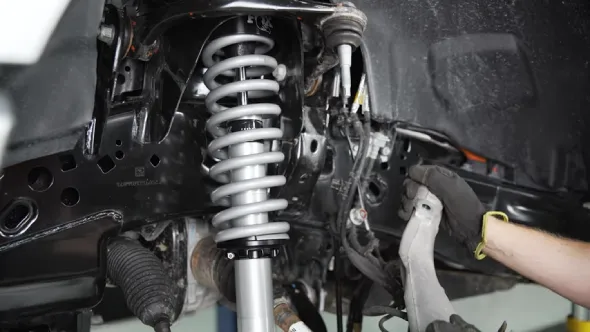
Installing both a leveling and body lift kit together on a single truck can achieve greater ground clearance while giving it an elevated look. It’s worth noting that combining them may result in undesirable effects like reduced control when cornering and less suspension travel due to more stress on shocks and struts.
Also, installing these two types of lifts together requires more time and effort because they must be done simultaneously, so it might not be worth the cost savings if you’re using the truck for off-road purposes.
Is a Leveling Kit or a Lift Kit Better?
When deciding between a leveling or lifting kit for your truck or SUV, it largely depends on what you plan on using it for most often, either driving around town or taking it out off-roading.
If you plan on using your vehicle mainly for regular road use, then going with a leveling kit makes sense since it improves handling while maintaining ride quality (due to no changes being made in shock absorbers). These kits are also easier and less expensive to install than lifting kits since they don’t require significant modifications.
On the other hand, if you plan on taking your truck off-roading, then going with a lifting/suspension lift kit would be ideal since they provide enhanced ground clearance while allowing bigger tires that are necessary while going over obstacles like rocks, mud, etc.
What Rides Better Leveling Kit or the Lift Kit?
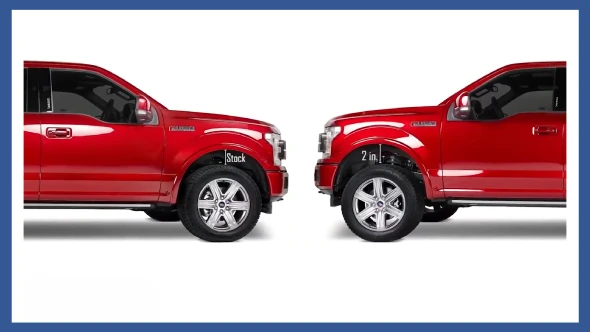
When it comes to the ride quality of a vehicle, many drivers consider whether equipment such as leveling kits or lift kits improves their vehicle’s overall performance.
Leveling kits are ideal for those wanting to gain modest ground clearance while maintaining their factory-like ride. For example, entry-level platforms will benefit from a leveling kit because it can help increase traction when operating off-road without sacrificing too much comfort on paved surfaces.
Lift kits usually involve more parts and cost more than leveling kits, but they offer more suspension improvements and more ground clearance because they raise the ground point of contact. It makes off-roading easier and makes it easier to avoid obstacles when crossing rough terrain or deep water.
Do Leveling Kits Wear Out Ball Joints?
Leveling kits can wear out ball joints if they are not installed properly. This is due to the increased angle that occurs when a vehicle is lifted with a leveling kit.
This increased angle puts extra pressure on the ball joint and can cause dirt and grit to get inside, which can lead to a lack of lubrication. In extreme cases, this could cause the ball joint to snap and fail, resulting in the wheel turning sideways unexpectedly.
Do Leveling Kits Hurt Your Suspension?
Leveling kits can hurt your vehicle’s suspension system as they change its overall design of it. Avoiding this by having a professional install the kit and performing regular maintenance on it is possible.
Even with these precautions taken, the kit could cause issues with your suspension system over time as it alters its design parameters.
Do You Need New Shocks with a 2 Inch Leveling Kit?
Installing a 2-inch leveling kit may not require the replacement of your existing shock absorbers. However, for peak performance, it is highly recommended. Increased ride height can inevitably affect the quality of the driving experience without a fresh set installed.
Upgrade your shocks for a smoother and safer ride. Doing so can provide important benefits like greater stability, increased control on uneven terrain, and improved performance. Since different vehicles have unique shock absorber needs, it is vital to do the research before settling on the ideal option for you.
Do Lifted Jeeps Flip Easier?
Lifted jeeps are more prone to flipping or rolling due to their higher center of gravity when compared to stock vehicles. Whether or not a lifted jeep will flip easily depends on several factors, such as the height of the lift kit, the quality of the lift kit itself, and the driving conditions.
It is important for drivers of lifted jeeps to pay close attention to their surroundings when driving. Be aware that they may be more likely to roll over if they attempt any risky maneuvers, such as taking turns too sharply at high speeds or off-roading too aggressively.
Optimize Your Vehicle for Any Terrain With Lift & Leveling Kits
Using both lift kits and leveling kits together will give your vehicle added versatility when tackling various terrain types. Even though stacking a leveling kit on top of a lift kit might not be recommended by many lift kit manufacturers, it is still possible if the correct-sized bolt is used.
With more ground clearance, you’ll avoid getting stuck in mud and sand and get a smoother ride. Check that everything is aligned before you take your car out by following the step-by-step guide above. By preparing and installing your car correctly, you can make sure it can handle anything.
